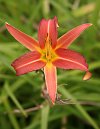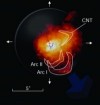
Parkinson’s disease and Alzheimer’s disease are devastating illnesses. The former steals a person’s control of their body while the latter takes away their mind. There are no cures. But new research into biologic rhythms now underway could help the medical profession find diagnostic tools that spot the early stages of the disease sooner, rather than later.
“Both Parkinson’s disease (PD) and Alzheimer’s disease (AD) have a profound effect on biologic rhythms,” Otto Appenzeller told me, “Both diseases are recognized clinically only after a considerable loss of nerve cells, which might take years. For example, the clinical diagnosis of PD is only possible after about 70% of nerve cells disappear in a specific region of the brain at risk of complete devastation by the time the disease is easily diagnosed by physicians.”
Appenzeller and his colleagues at the New Mexico Health Enhancement and Marathon Clinics Research Foundation and the University of New Mexico in Albuquerque, USA, together with co-workers at the Universita degli Studi di Milano, in Italy, are using spectral analysis of stable isotope ratios to track changes in hair and tooth enamel that could lead to earlier diagnostics for neurodegenerative diseases such as Parkinson’s and Alzheimer’s disease.
Appenzeller points out that there is therefore a great urgency to find “biomarkers” that would betray the presence of these and other diseases before they are clinically diagnosed. Such biomarkers could allow treatments to be started sooner and potentially save nerve cells and so alter the course of the illness. “Since hair (and teeth) preserve a record of biologic rhythms spanning several years, disturbances in these rhythms attributed to PD or AD as gleaned from stable isotope ratios may provide an important hint of disease processes at work in a given subject,” he told me.
The Michael J Fox Foundation for research into PD has recently launched a “request for research proposals” entitled Biomarkers for Parkinson’s disease, for which the foundation has allocated US$1million (about £500k). “At present, there are no good drugs available that can save nerve cells from destruction but the pharmaceutical companies are working feverishly in this area,” Appenzeller said.

 Research in the field of exobiology relies on one of the biggest assumptions we make about the universe – that we are not alone, that there could be life on worlds other than the Earth.
Research in the field of exobiology relies on one of the biggest assumptions we make about the universe – that we are not alone, that there could be life on worlds other than the Earth.





 For those of you who are interested in knowing a bit about my personal life, I’ve spent daytimes this week on a digital photography course (evenings and early mornings have been blogging and work as usual, which makes for a rather tiring week).
For those of you who are interested in knowing a bit about my personal life, I’ve spent daytimes this week on a digital photography course (evenings and early mornings have been blogging and work as usual, which makes for a rather tiring week). A cocktail of chemicals is venting in enormous jets from the oxygen-rich surroundings of a supergiant star 5000 light years from earth, according to Arizona radio astronomers. Using the the Arizona Radio Observatory’s 10m Submillimeter Telescope (SMT) on Mount Graham, which is so sensitive it could detect emissions from deep space that are weaker than a typical light bulb, the team has picked up the chemical signatures for a range of small molecules and ions.
A cocktail of chemicals is venting in enormous jets from the oxygen-rich surroundings of a supergiant star 5000 light years from earth, according to Arizona radio astronomers. Using the the Arizona Radio Observatory’s 10m Submillimeter Telescope (SMT) on Mount Graham, which is so sensitive it could detect emissions from deep space that are weaker than a typical light bulb, the team has picked up the chemical signatures for a range of small molecules and ions.